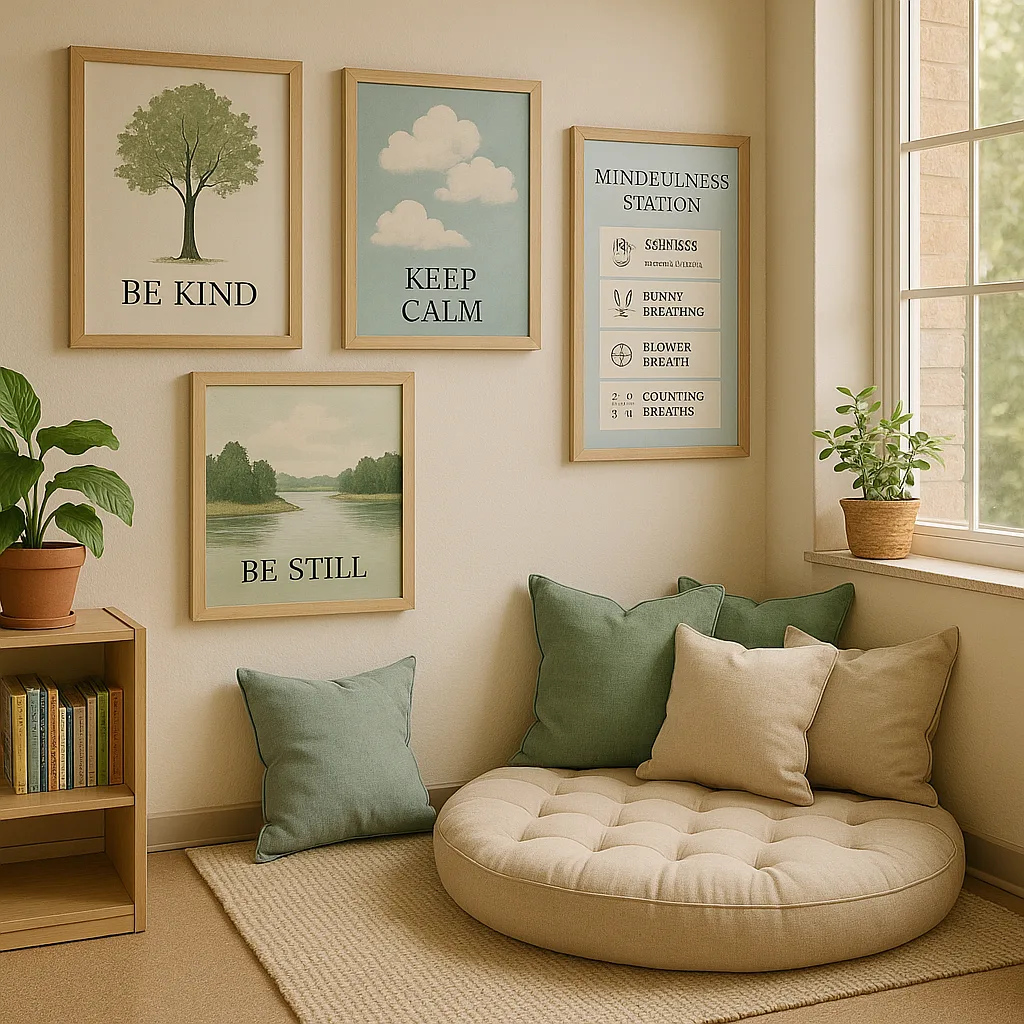Poster Maker Machines for Anxious Learners – Design Peace
Understanding the Anxious Learner’s Visual Needs
Research from the Journal of Environmental Psychology shows that classroom visual environments directly impact student stress levels and cognitive performance. For anxious learners, overwhelming or chaotic visual spaces can trigger fight-or-flight responses, while thoughtfully designed environments promote feelings of safety and calm. Therefore, understanding how to create supportive visual spaces is essential for educator wellness and student success.
Students experiencing anxiety often process visual information differently. Moreover, their heightened sensitivity to environmental stimuli means that traditional bright, busy classroom decorations can actually increase stress rather than inspire learning. Subsequently, we need to approach poster design with intention and psychological insight.
Evidence-Based Color Choices Using Poster Maker Machines for Anxious Learners
When selecting colors for calming posters, research points to specific palettes that promote emotional regulation. Additionally, understanding how different hues affect the nervous system helps us make informed design choices.
Calming Color Guidelines:

Research-backed color choices for reducing classroom anxiety
Creating Poster Maker Machines for Anxious Learners: Imagery That Soothes
The images we choose for classroom posters significantly impact student emotional states. Meanwhile, research from the International Journal of Environmental Research and Public Health demonstrates that nature-based imagery reduces cortisol levels and improves mood regulation. Consequently, selecting appropriate visuals is crucial for supporting anxious learners.
Forests, oceans, and gardens activate relaxation responses
Simple, symmetrical designs provide visual predictability
Peaceful animals trigger nurturing feelings and comfort
Flowing, organic shapes without sharp edges
Typography and Text Design for Reduced Anxiety
The way we present text on posters significantly impacts readability and stress levels for anxious learners. Meanwhile, cluttered or difficult-to-read designs can increase cognitive load and trigger anxiety responses. Thus, thoughtful typography choices are essential.
• Use sans-serif fonts for clarity (Open Sans, Lato, Nunito)
• Maintain generous spacing between lines (1.5-2x)
• Limit text to essential messages
• Use larger font sizes (minimum 24pt for distance viewing)
• Create high contrast between text and background
• Avoid all-caps text except for single words
Getting Started: Your Action Plan
Creating a calming visual environment doesn’t happen overnight. However, with the right tools and approach, you can begin transforming your classroom into a supportive space for anxious learners. Subsequently, here’s your step-by-step implementation guide:
Week 1-2: Assessment and Planning
• Survey students about current stress triggers
• Identify high-anxiety zones in your classroom
• Research calming poster designs using our Paper and Media Types guide
• Create a visual environment map
Week 3-4: Design and Production
• Use poster maker machine for schools to create initial calming posters
• Start with entry point and quiet corner designs
• Test different color combinations
• Gather student feedback on prototypes
Week 5-6: Implementation and Adjustment
• Install posters strategically throughout the space
• Monitor student responses and anxiety levels
• Adjust placement based on usage patterns
• Document changes in classroom atmosphere
Ongoing: Maintenance and Evolution
• Regularly refresh designs to maintain effectiveness
• Involve students in creating new calming posters
• Share successful designs with colleagues
• Build a library of evidence-based visuals

